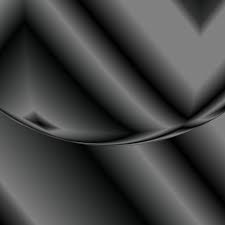
Conductive Carbon Black: Unlocking Electrical Conductivity in Diverse Applications
2024-07-18
1. What is Conductive Carbon Black?
Conductive carbon black (CCB) is a remarkable material comprising submicroscopic carbon particles with exceptional electrical conductivity. These particles, typically spherical in shape with diameters ranging from 15 to 50 nanometers, facilitate the flow of electrical current when incorporated into a substance.
2. Properties of Conductive Carbon Black
CCB imparts several desirable properties to materials:
- Electrical Conductivity: CCB's high electrical conductivity renders it suitable for a wide range of electrical applications.
- Low Electrical Resistivity: The low electrical resistivity of CCB ensures minimal resistance to electrical current flow.
- Chemical Inertness: CCB is chemically inert, preventing unwanted reactions and ensuring compatibility with various materials.
- Reinforcing Agent: CCB acts as a reinforcing agent, enhancing the strength and toughness of composite materials.
- UV Protection: CCB absorbs ultraviolet radiation, protecting materials from degradation caused by sunlight.
3. Manufacturing Conductive Carbon Black
CCB is produced through the incomplete combustion or thermal decomposition of hydrocarbon sources such as natural gas, acetylene, or petroleum. By controlling the process conditions, manufacturers can tailor the particle size, surface area, and other properties of CCB to meet specific application requirements.
4. Applications of Conductive Carbon Black
CCB finds application across numerous industries, including:
- Batteries: Enhances the conductivity of battery electrodes, enabling faster charging and improved performance.
- Electronics: Provides electrical conductivity to conductive plastics, inks, and adhesives used in printed circuits and electronic devices.
- Electrochemical Devices: Serves as an electrode material in energy storage and conversion devices, such as supercapacitors and fuel cells.
- Rubber and Plastics: Imparts electrical conductivity to rubber and plastic products, preventing electrostatic buildup and enabling anti-static properties.
- Conductive Paints and Coatings: Adds electrical conductivity to paints and coatings, creating conductive surfaces for various applications.
5. Environmental Considerations
CCB is generally considered a safe material with low toxicity. However, precautions should be taken to minimize exposure during handling and processing, as inhalation of fine particles can potentially cause respiratory irritation.
6. Market Overview
The global conductive carbon black market is estimated to reach $1.5 billion by 2026, driven by increasing demand in the electronics, automotive, and energy storage industries. Asia-Pacific is the dominant market, accounting for over 50% of global consumption.
Benefits of Using Conductive Carbon Black
- Enhances electrical performance
- Improves the durability of materials
- Reduces electrostatic discharge
- Provides UV protection
- Enhances the toughness of composites
Step-by-Step Guide to Using Conductive Carbon Black
- Determine the desired electrical conductivity and other material properties.
- Select the appropriate CCB grade based on particle size, surface area, and conductivity.
- Disperse the CCB evenly into the base material using appropriate mixing techniques.
- Test the conductivity and other properties to ensure they meet specifications.
- Handle the CCB in a well-ventilated area and wear appropriate personal protective equipment.
Useful Tables
| Property | Value |
|---|---|
| Electrical Resistivity | 10-100 ohm-cm |
| Surface Area | 100-200 m2/g |
| Particle Size | 15-50 nm |
| Application | Examples |
| --- | --- |
| Batteries | Lithium-ion batteries, lead-acid batteries |
| Electronics | Printed circuit boards, conductive inks |
| Rubber and Plastics | Anti-static rubber tires, conductive plastic housings |
Experience Tips
- Use a high-shear mixer to ensure uniform dispersion of CCB.
- Add CCB gradually to avoid agglomeration.
- Test the material's conductivity at different levels of CCB loading.
- Consider using surface treatments to improve the compatibility of CCB with other materials.
- Store CCB in a dry and cool environment to prevent moisture absorption.
If you want to get high-quality Conductive Carbon Black, you might as well try DERY. As a professional Conductive Carbon Black manufacturer, DERY can provide you with high-quality products and services. Welcome to contact us to get detailed ordering information!
Previous page:What is the ASTM Grade of Carbon Black?
Next page:Overview of the Basic Definition and Uses of Carbon Black

